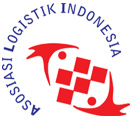Why Reverse Logistics Is As Important As Forward Logistics When It Comes To Optimizing Value And Sustainability
Steve Sensing
 Recondition,
Repair, Repackage, Restock, Reuse or Recycle to Reduce Carbon Impact and
Recover Revenues
Recondition,
Repair, Repackage, Restock, Reuse or Recycle to Reduce Carbon Impact and
Recover Revenues
When it comes to your supply chain, product lifecycle management may well be the "new black." The discipline aims to optimize value across the entire product lifecycle, from the inception of an idea to the return, recovery and disposal of parts or products.
Savvy supply chain managers are seizing opportunities to drive efficiencies throughout the product lifecycle. However, there's one area that's historically been overlooked: reverse logistics. In the past, the product lifecycle ended when the consumer walked out the door with a purchase. Returns management was a cost center, with little to no visibility into what products/parts were in the pipeline or what should be done with them.
Today, however, the focus on product lifecycle management is changing. As it does, companies are designing products with end-of-life processes in mind. They're also rethinking the processes associated with returning and disposing of goods. Ready to make reverse logistics a strategic link in your product lifecycle value chain?
Here are five things you need to know:
1. So, what is reverse logistics anyway?
Forward logistics deals with the flow of products from factory to consumer. Reverse logistics refers to all of the processes associated with returning products, parts, and materials from end consumers. These activities include repair, warranty recovery, redistribution, value recovery, product/service contract returns, product recalls, used equipment and replacement parts for refurbishment, resale or sale as raw material or end-of-life recycling. The goal in all cases is to maximize asset recovery and supply chain efficiency, reduce costs and improve the customer experience.
2. Why is reverse logistics becoming a key initiative today?
A perfect storm of factors is driving interest in reverse logistics. Of all products sold, an average of eight to twelve percent are returned. The cost to return those units is two to three times that of the forward logistics activities that bring them to market.
At the same time, the popularity of expensive electronic devices like smartphones, tablets and smart TVs is exploding, amplifying the number of returns. So, too, is the focus on environmental responsibility. E-waste is now the fastest growing municipal waste stream in the United States. Every year, American consumers dispose of an estimated 400 million electronic units. Of the 2.4 million tons of e-waste generated in 2010, only 27% was recycled. The remaining 73 percent went to landfills and incinerators. Today, 83% of e-waste laws hold manufacturers accountable for collection, transportation and recycling of products. Sustainable reverse logistics activities like repair, refurbishment, repackaging, recycling and harvesting can help mitigate impacts.
These trends, coupled with more flexible retail return policies, continuous innovation, shorter product lifecycles and tough electronic waste regulations are shining a light on reverse logistics as a key component of the product lifecycle.
3. Why is reverse logistics so critical to the hi-tech and electronics industry?
The clock speed of product lifecycles is particularly fast for hi-tech and electronic products. Consumers are constantly on the lookout for "the next big thing", which means innovation cycles are faster. Given shorter product lifecycles, multi-channel distribution and the focus on energy use and emissions, a reverse logistics program that streamlines the retrieval, transport, inspection, sorting, disposal and recovery and recycling of customer returns can help manufacturers recoup revenue streams.
ryder chart2
4. What core functions does reverse logistics involve?
The end-of-life process typically involves four areas of focus:
Waste management: disposition, disposal and related compliance activities
Liquidation: marketing and sale of products to the secondary market
Service parts logistics: field stocking locations, parts management
Repair & refurbishment: diagnosis, repair, cosmetic and component repair, parts sourcing, planning and harvesting
5. What are the keys to optimizing reverse logistics?
Visibility: using integrated technology to create visibility across the supply chain.
Velocity: co-locating forward, reverse, & repair functions to trim transportation, infrastructure and overhead costs and increase disposition and speed to shelf.
Value recovery: accurately determining the appropriate disposition of assets to recover the most value. Depending on the condition of the asset, options include resale, return to vendor, refurbish/repair, recycle or donation.
Think you could benefit by integrating sustainable returns/end-of-life processes into your product lifecycle management strategy? Don't have the resources to tackle the project in-house? Consider partnering with a qualified reverse logistics expert to help you recover more value from returns and reduce environmental impact.
To learn more about how you can benefit from an effective reverse logistics operation, download our Reverse Logistics White Paper now.
- See more at: http://blog.ryder.com/2013/11/product-lifecycle-management/#sthash.XUi7Hn3E.dpuf








